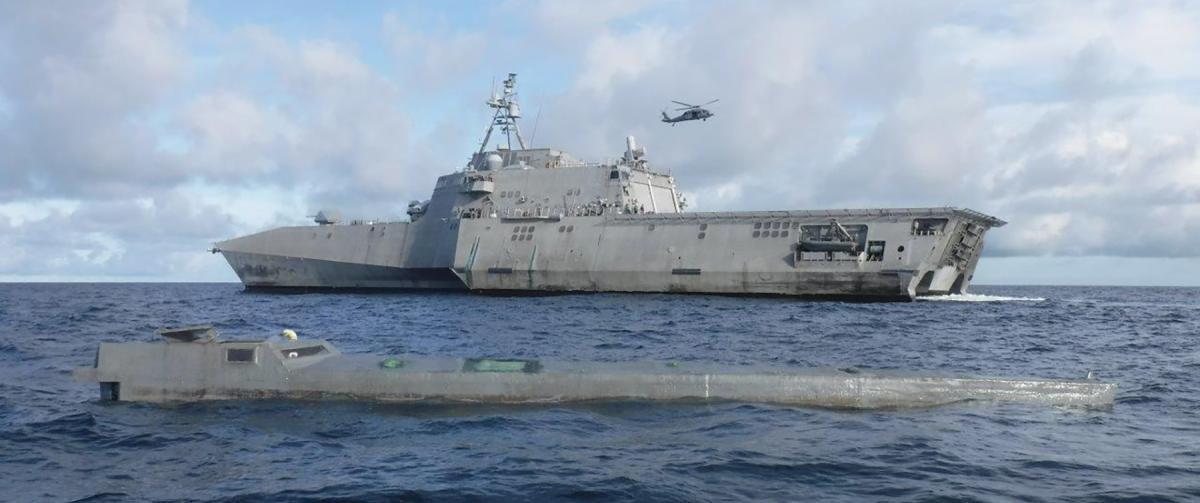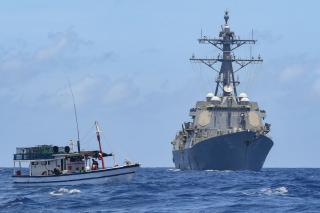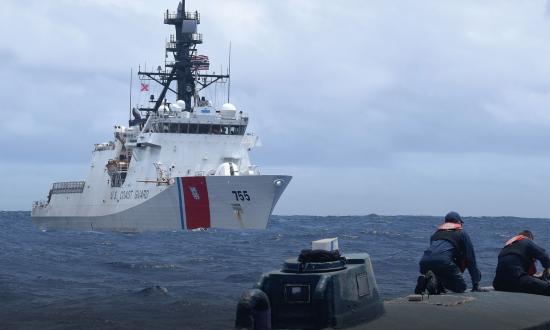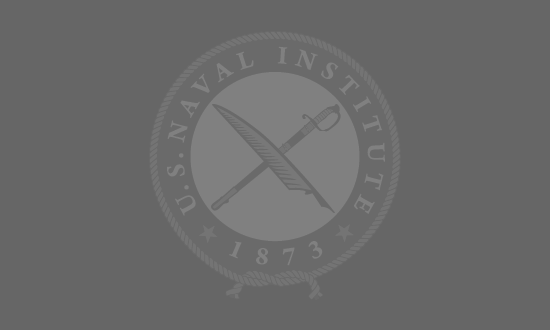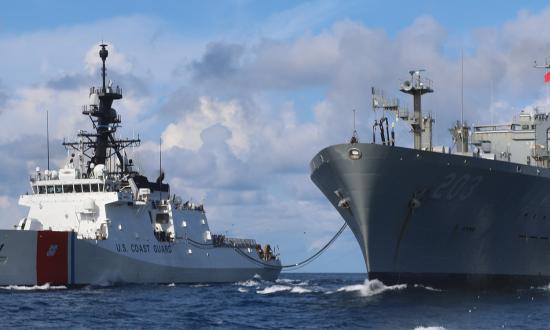In its various forms, the War on Drugs is one of the most misunderstood and pilloried national security engagements in which the U.S. military has participated. Nevertheless, the counternarcotics mission offers numerous training benefits for its practitioners—from fostering tactical agility to nurturing interoperability with allies. The Navy should renew its focus on this mission, using assets slated for decommissioning to bolster security in the Western Hemisphere.
A Quick Primer
Targeting illicit narcotics is one element in a networked approach to countering transnational criminal organizations—many of which have direct ties to terrorist groups—by taking aim at their revenue streams.1 In Central and South America, these organizations destabilize countries through corruption and violence, driving increased migration and food insecurity.2
Interdicting smugglers at sea is safer than targeting terrestrial trafficking, as narcotics loads are more vulnerable in the open ocean and their traffickers generally are unarmed. Most important, maritime law and bilateral agreements facilitate robust follow-on law enforcement action and prosecution, further weakening transnational criminal networks.3
Improving Tactical Proficiency
Targeting smugglers at sea is an opportunity for crews to develop critical tactical proficiencies. Imagine a Navy ship deployed in support of the counternarcotics mission. In the middle of the night, the combat information center receives information on a target of interest within the ship’s sphere of influence.
The ship immediately maneuvers for intercept and establishes communications with overhead maritime patrol aircraft. The watch team coordinates with the overhead aircraft, law enforcement entities ashore (who imbue the ship with the proper authorities to carry out the mission), and the embarked Coast Guard law enforcement team.
While coordinating with external entities, the ship’s force is determining the correct course and speed for intercept and the precise moment to launch the ship’s helicopter and small boat.
Coast Guard crews carry out this sequence, sometimes daily, for months on end.
This is a glimpse into the operational acumen the Navy could develop through continual counternarcotics operations, inculcating tactical elasticity into a generation of wardrooms and future commanding officers.
Promoting International integration
Counternarcotics is a true joint mission, with many U.S. government and international agencies and military services collaborating to stem the flow of illegal drugs. Not only would the Navy’s participation produce seasoned sailors, well-practiced in the fundamentals critical in a future conflict, but it also would smooth integration seams among allies and partners.
In the Caribbean, in addition to vital capacity-building interactions with regional navies, there is a significant opportunity to exercise with allied global navies. Nations that have enduring counternarcotics equities in the region—Great Britain, the Netherlands, and France—also (with the exception of the Netherlands) have an established stake in the Indo-Pacific region. The counternarcotics mission offers the U.S. Navy the opportunity to practice tactical coordination with its allies in a low-risk environment.
With What Navy?
The likely response to this proposal is that the Navy lacks the capacity to direct already scarce hulls toward the counternarcotics mission. However, the Navy already does contribute: The fraught littoral combat ship (LCS) has enjoyed moderate success in counternarcotics and is an ideal candidate to continue executing the mission on behalf of the Navy.
The LCS offers a tailored solution for engaging in the counternarcotics mission without committing the precious bandwidth of capital assets. As the Navy decommissions fledgling LCS hulls, an attractive alternative is to dedicate the ships as counternarcotics workhorses in the Western Hemisphere. There, maintenance and logistics challenges could be addressed and the ships put to good use while the Coast Guard’s aging medium-endurance cutter fleet is fully recapitalized.
Balancing Roles and Sharing Priorities
Just as the triservice maritime strategy Advantage at Sea advocates for strengthening alliances and partnerships, it also calls for “prevailing in day-to-day competition to uphold the rules-based order.” For many, this conjures images of freedom of navigation operations in the South China Sea; however, countering narcotics smuggling falls equally under the banner of “uphold the rules-based order” as do stopping illegal fishing and pushing back against excessive territorial claims.
Indeed, for many nations, issues labeled “nontraditional security” are plain security.4 Here, maritime planners should look toward a framework in which Coast Guard and Navy assets are interchangeable within certain mission spheres, especially as the global demand for “coast guard work” continues to grow.5 For every Legend-class cutter operating in Seventh Fleet, the Navy should offer an LCS that can be applied to other missions. The two assets are not equivalent, but within certain functional areas they have proven semi-interchangeable. The Navy will never shoulder the mantle of homeland security missions, just as the Coast Guard will never replace the Navy’s capabilities in hostile environments. However, it is reasonable that given global demand for U.S. maritime security expertise, there will be a continued blurring of duties and responsibilities.6
The Navy has a unique opportunity to employ ships it is set to decommission in a high-tempo environment that will breed tactical elasticity, foster interoperability with global allied navies and sister Sea Services, and produce positive outcomes for national security.
1. National Security Council, “Transnational Organized Crime: A Growing Threat to National and International Security,” in Strategy to Combat Transnational Organized Crime (Washington, DC: The White House, 25 July 2001); and Joby Warrick and Souad Mekhennet, “Hezbollah Operatives Seen Behind Spike in Drug Trafficking, Analysts Say,” The Washington Post, 4 August 2020.
2. See Jessica Jones and Jennifer Podkul, Forced from Home: The Lost Boys and Girls of Central America (New York: Women’s Refugee Commission, 2012).
3. Thomas “Buddy” Bardenwerper, “Pushing or Overstepping? Legal Boundaries in the Fight Against Maritime Drug Smuggling, Pt. 2,” CIMSEC, 22 November 2021.
4. James Goldrick and Blake Herzinger, “Clarifying Maritime Strategy: ‘Non-Traditional Security’ Is Just ‘Security,’” CIMSEC, 20 January 2022.
5. ADM Karl L. Schultz, USCG, “State of the Coast Guard 2022,” Air Station Clearwater, 24 February 2022.
6. Jon Frerichs, “Sea Control 300—A New Planning Model for Lower-Threshold Maritime Operations,” CIMSEC podcast, 9 December 2021.



